For video on core strengthening, click to the right-->
Or, for one page summary of lumbar core strengthening exercises, click here.

The core of your body, which also refers to your trunk, is the area between the shoulders and the pelvis. One of the principles of spinal rehabilitation is a focus on strengthening this area.
By strengthening the muscles of the core/trunk, you can take some stress off the areas generating the pain, which includes fascia (the sock covering the muscles), ligaments, and discs. Also, if you think about how you might bear down when you lift something heavy, remember that you tighten up your abdominal muscles; therefore, it makes sense that these muscles help support your spine.
Your postural muscles have more muscle tone (refers to the low level of muscle contraction while you are at rest) than the muscles of the arms or legs. By strengthening the muscles of the trunk, you increase their tone.
Some of the exercises are illustrated below.

For the front of your body:
Abdominal crunches, done by lifting the head and shoulders off the mat. You don’t have to do a full sit-up!! (touching your elbows to the knees). Just by lifting your head and shoulders off the floor, you will feel your abdominal muscles tighten. By lifting your head forward, you can strengthen the muscles in the middle of your abdomen.
By making a slight turn to one side and then the other, you can strengthen the muscles on the sides, called the obliques (indicated by arrows in diagram to right).
This patient (pictured far right) is not doing a whole sit up, but rather just lifting up one shoulder at a time.
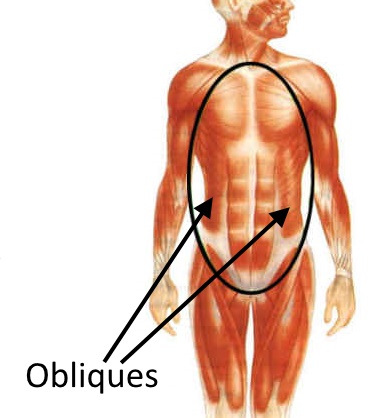
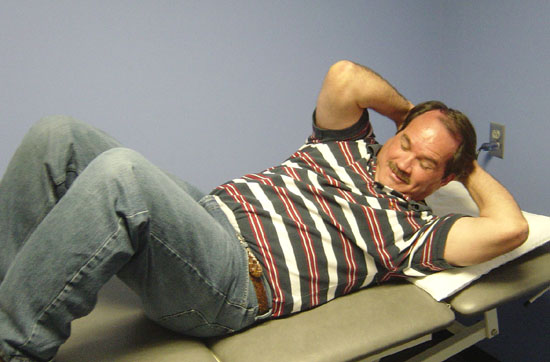

It would also help to slightly lift the leg on the side to which you are turning.
Lifting the leg helps exercise both the abdominal muscles and the psoas muscle (pictured right), which attaches to the spine.
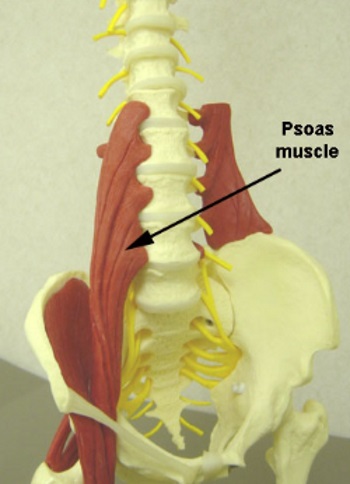

Another very good abdominal exercise can be performed by maintaining this position for a count of 10 seconds, then relax, and repeat. This exercise is called a plank as if your are using your body like a plank of wood. If at first it seems easy, try it a little longer. If the abdominal muscles weren’t working, the hips would fall to the floor. If this position seems too challenging, instead of resting the lower half of your body on the tips of your toes, try instead resting on your knees.
This exercise, or position, is called plank with rotation and can help strengthen the muscles on the right and left sides of the abdomen called the obliques. Hold this position first on one side, then the other, and you’ll feel the muscles on the sides tighten.
Hold the position for a few seconds, and as you get stronger, you can hold it longer.
(and yes, that’s me…younger!)
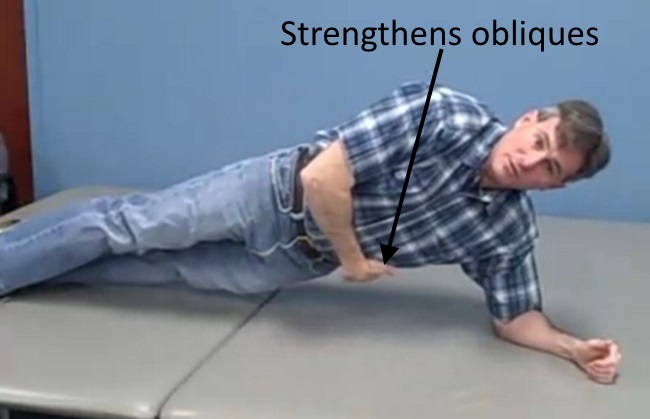

For the back of your body:
These exercises can be done to strengthen the lower and mid back. By extending backward, the back muscles can be felt contracting.
This exercise, which is called the Superman, involves extension of an arm and the opposite leg also helps strengthen back muscles.
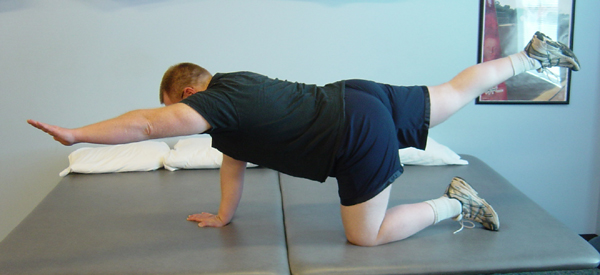
Some of these exercises, although done facing up, require your back muscles to contract. If you hold this position for a few seconds, you will feel how your back muscles are working.
If you don’t have access to an exercise ball (as shown in the picture to the right), you could put your legs on the sofa or a chair.

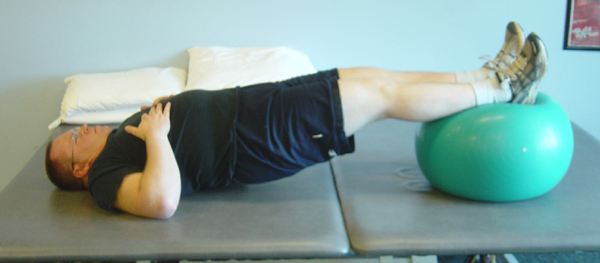
General conditioning
Any type of conditioning exercise can be very helpful. General conditioning can be achieved by a sustained exercise, such as walking, stationary bike, elliptical trainer, pool exercises, where you get your heart rate up and get sweaty (from your own effort, not from the weather) for at least 15-30 minutes, is often very beneficial. Actually, recommended exercise “dose” is 150 minutes a week.
If you have any questions about whether you might have a heart condition affecting your ability to participate in such a program, consult your physician.

